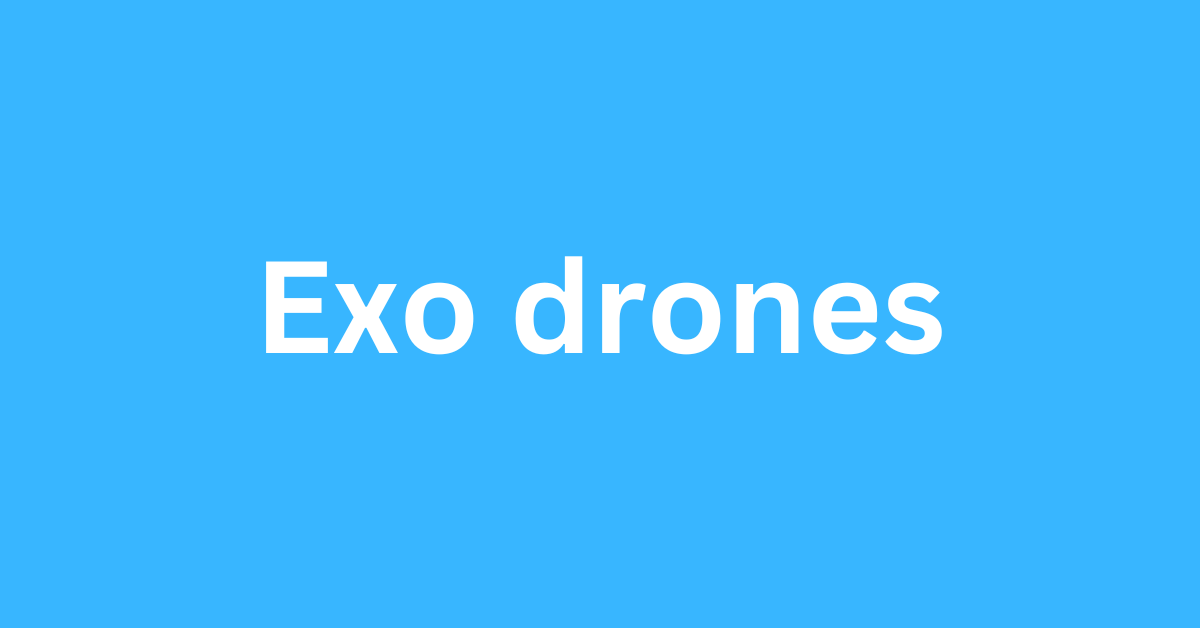The world today is very different from what it was a few years ago; technology has advanced rapidly, and its applications are becoming more varied and far-reaching. Drones have become increasingly popular in the last decade, with their uses spanning multiple industries, such as military, industrial, and commercial. As technology advances, so too do the number of ways drones can benefit each industry.
Tech Drone Basics
Tech Drones have become increasingly popular in recent years, with applications for military, industrial and commercial use. From remote surveillance to delivering packages, drones are revolutionizing how we interact with technology. With such a wide range of services, it is important to understand the basics of tech drones.
Types of Tech Drones
Regarding tech drones, several types vary in size, features, capabilities, and purpose. The most common type is a quadcopter – an aircraft with four rotors that provide lift and control – designed for aerial photography or videography. Other popular types include:
- Fixed-wing aerial vehicles have a greater range than quadcopters.
- Small nano-drones that offer mobile surveillance.
- Multirotor copters capable of carrying heavier loads.
- Rover drones equipped with wheels to navigate on land.
- Swarm robots that work collaboratively in groups.
Military Applications: Murder drones fanart
Murder drones fanart is designed for the sole purpose of killing humans. The idea behind them is simple; they can be programmed to hover above a target area and fire upon anyone or anything that enters it without warning or mercy – making them perfect for targeted assassinations or warfare scenarios where large numbers of casualties need to be minimized. However, many view this type of weapon as morally wrong and unethical; hence why murder drone fan art has become popular amongst those who oppose their use.
Parts of a Drone
Drone technology is becoming more accessible to people of all levels of experience. Understanding the parts of a drone can help you get started on your journey into tech and robotics.
The main components of a drone are:
- Frame,
- Motors,
- ESCs (electronic speed controllers),
- Propellers,
- Flight controller,
- Receiver,
- Transmitter,
- Battery
The frame consists of arms that connect to the motors and supports the other components which make up the drone. Motors rotate the propellers to generate lift force and keep the drone airborne. ESCs control motor speed while allowing it to overlay with other systems, like GPS navigation or camera gimbals if present. Propellers are used along with motors to push air downwards, creating thrust for drones to fly in different directions at varying speeds depending on their setup and configuration.
Industrial Applications: Walmart drones with camera
Industrial applications of drones are becoming increasingly popular. The retail giant Walmart drones with cameras are the latest to join in on the trend, introducing its fleet of camera-equipped drones. Using these drones gives Walmart various advantages over traditional methods, including increased safety and cost savings.
Walmart’s drone technology offers a range of uses, from surveillance and security to photography and inventory management. With its built-in camera, these cameras can provide real-time data and images which help monitor warehouse operations, track packages, detect intruders and even aid disaster recovery efforts. Additionally, the camera’s onboard sensors can detect changes in air quality or weather conditions which could potentially be hazardous for employees or customers.
Commercial Applications: Exo drones
Commercial applications of Exo drones are becoming increasingly popular in the modern business world. Businesses can employ these versatile machines for many tasks, from delivery services to surveillance missions. Exoskeletal drones are the perfect choice for companies looking to maximize efficiency and reduce labor costs.
These types of drones feature specialized frames that allow them to carry payloads or be used for surveillance without having a human operator on board. Furthermore, these automated aerial vehicles can fly autonomously over long distances and access difficult-to-reach areas quickly and safely. Companies can use Exo drones to deliver goods, survey landscapes, inspect infrastructure, monitor events, and collect data – all with high accuracy and safety. The potential applications are endless!
Safety & Security Concerns:
With the growing development of drone technology, companies such as Walmart have begun to explore the potential of using drones with cameras in their business practices.
In addition to being able to monitor inventory levels, drones equipped with cameras could be used by Walmart for a variety of tasks, including surveillance and deliveries. The increased mobility provided by these devices gives Walmart an advantage over traditional methods because they can quickly move around sites to assess different areas at once. However, implementing such technology raises questions about privacy rights and personal safety due to concerns over unauthorized surveillance or misuse.
The potential for misuse extends to customers and employees – especially those working night shifts or in remote locations with limited access points.
Regulatory Environment:
The regulatory environment for Exo drones is a rapidly changing landscape. As these unmanned aerial vehicles (UAVs) become increasingly commonplace, regulating their operation and use has become more pressing. Drones have applications in military, industrial and commercial settings, all of which require careful consideration regarding safety, security, and privacy regulations.
Exo drones are unlike any aircraft that has come before them – they are faster and have greater capabilities than ever before – so there needs to be a clear set of guidelines governing their use.
Regulators worldwide are confronting the challenge of regulating Exo drones by introducing laws protecting public safety while allowing drone technology to reach its full potential. In some cases, this regulation may also include restrictions on where specific types of drones can be used or who can operate them.
Challenges & Limitations:
In recent years, the use of drones for various military and commercial applications has grown exponentially. These drones have become increasingly sophisticated, performing multiple tasks, from surveillance to delivery. Despite their potential benefits, several challenges and limitations are associated with using drones in different contexts. This article will explore the challenges and constraints posed by exo-drones and murder drones fanart in Tech Drones Applications for Military, Industrial and Commercial purposes.
Exo-drones are large robots designed to carry out specific tasks such as surveillance or search-and-rescue operations. Although they offer greater mobility than traditional manned aircraft due to their lightweight design, they are also more vulnerable to weather extremes, which can cause excessive noise levels or jamming of control signals.
Bottom Line
There are many applications for tech drones in military, industrial and commercial environments. For example, military drones gather reconnaissance and engage targets, while civilian drones can be used for communications, surveillance, and mapping. Industrial applications include warehouse inventory management and precision crop spraying on farms, while commercial uses cover everything from delivering packages to capturing aerial footage for films.
As technology advances and the cost of entry decreases, so does the potential of these versatile machines. Drones will continue to change how we interact with our environment as their capabilities expand into previously untapped markets across all sectors. With the proper regulations in place and further research into their use cases, tech drones have an exciting future ahead of them!


